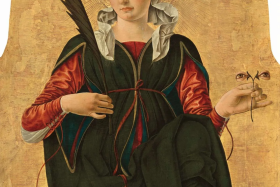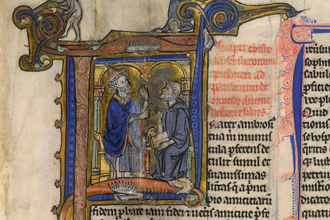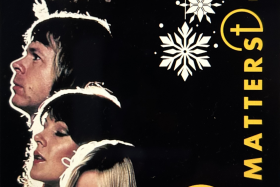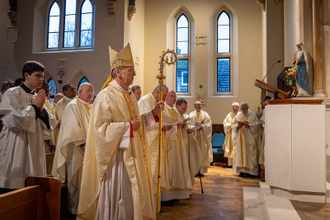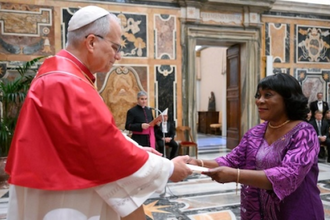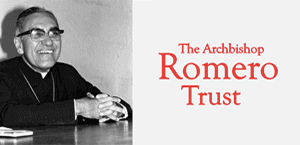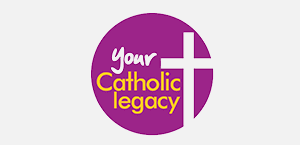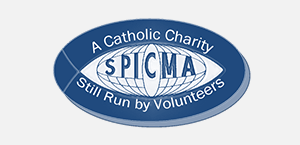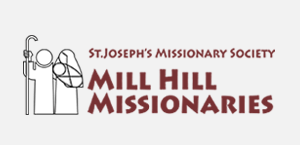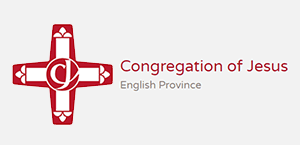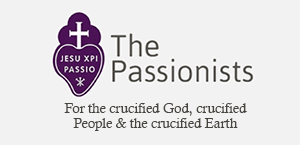Gospel in Art: I am the bread of life
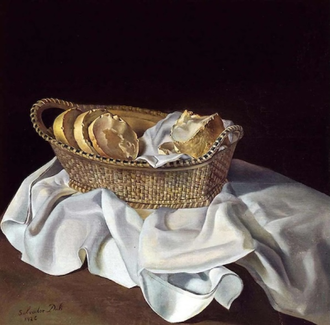
Basket of Bread by Salvador Dali. Painted in1945 © Dali Museum, Figueras, Spain
Source: Christian Art
Gospel of 6 May 2025
John 6:30-35
At that time: The crowd said to Jesus, 'Then what sign do you do, that we may see and believe you? What work do you perform? Our fathers ate the manna in the wilderness; as it is written, "He gave them bread from heaven to eat."' Jesus then said to them, 'Truly, truly, I say to you, it was not Moses who gave you the bread from heaven, but my Father gives you the true bread from heaven. For the bread of God is he who comes down from heaven and gives life to the world.' They said to him, 'Sir, give us this bread always.'
Jesus said to them, 'I am the bread of life; whoever comes to me shall not hunger, and whoever believes in me shall never thirst.'
Reflection on the Painting
When we think of Salvador Dalí, we often picture his surreal, dreamlike landscapes filled with melting clocks and fantastical imagery. Yet, in 1945, at the end of the devastation of World War II, Dalí produced a surprisingly restrained and contemplative work titled 'Basket of Bread'. Here, he returns to simplicity, focusing on one of the most fundamental symbols of human life, a loaf of bread. But this is no ordinary still life. The loaf, half-eaten, rests in a basket that teeters precariously over the edge of a bare table, illuminated against a stark black background. The light seems to emanate from the bread itself, quietly drawing us in. In this subtle glow, Dalí invites us to contemplate something far deeper: the presence of Christ, the Bread of Life, shining in a world overshadowed by darkness.
The painting also carries a powerful political message. Its full title, 'Basket of Bread: Rather Death than Shame', reflects the grim reality of 1945. The precariously placed basket suggests vulnerability, sacrifice, and the fragility of life in the aftermath of war. The contrast between the bread, symbolising sustenance, hope, and life, and the oppressive blackness behind it evokes the struggle between good and evil. Good triumphed evil in the Second World War. Dalí's subtitle is thought to reference Adolf Hitler's choice to embrace death rather than face the shame of defeat on 30th April 1945. In this context, the painting becomes a meditation on dignity, survival, and moral courage. It later took on renewed significance when it was used as a central image for the Marshall Plan, symbolising the rebuilding of Europe through shared resources-bread becoming a sign of restoration and hope.
In today's Gospel reading, Jesus declares, "I am the bread of life; whoever comes to me shall not hunger." Dalí's painting, whether intentionally or not, resonates deeply with this truth. At a time when the world was starved not only of food but of peace, dignity, and meaning, Christ's words remind us that true nourishment goes beyond physical survival. The bread that sustains forever is Christ Himself; bread that is broken for us during the Eucharist and offered to a broken world! A world longing for light amidst darkness. In times of uncertainty and fragility-whether in 1945 or today-we are called to seek the Bread that does not perish, the gift of Christ who feeds both body and soul, and who alone can restore what war, sin, or suffering seek to destroy.
LINKS
Gospel in Art: https://christian.art/
Today's Reflection: https://christian.art/daily-gospel-reading/john-6-30-35-2025/ (with audio)



